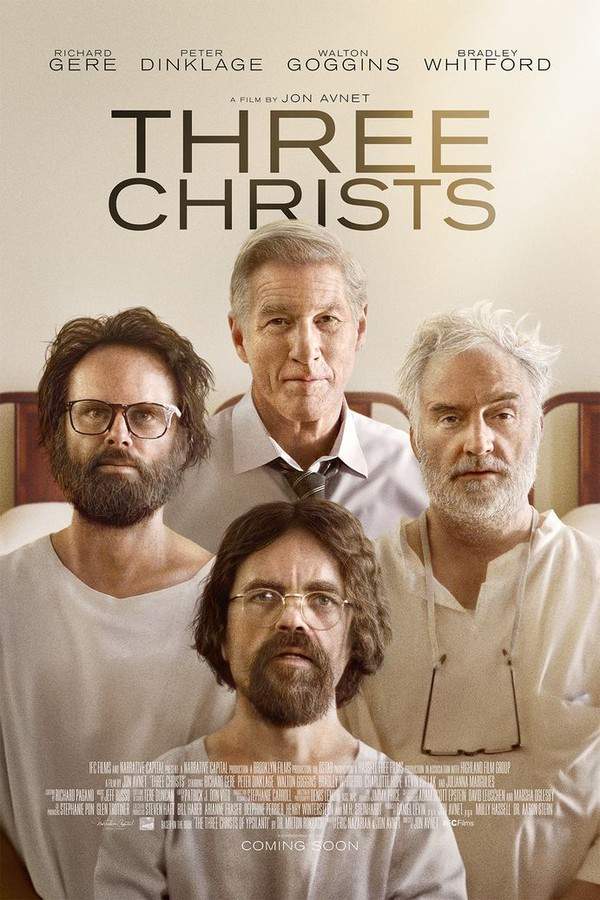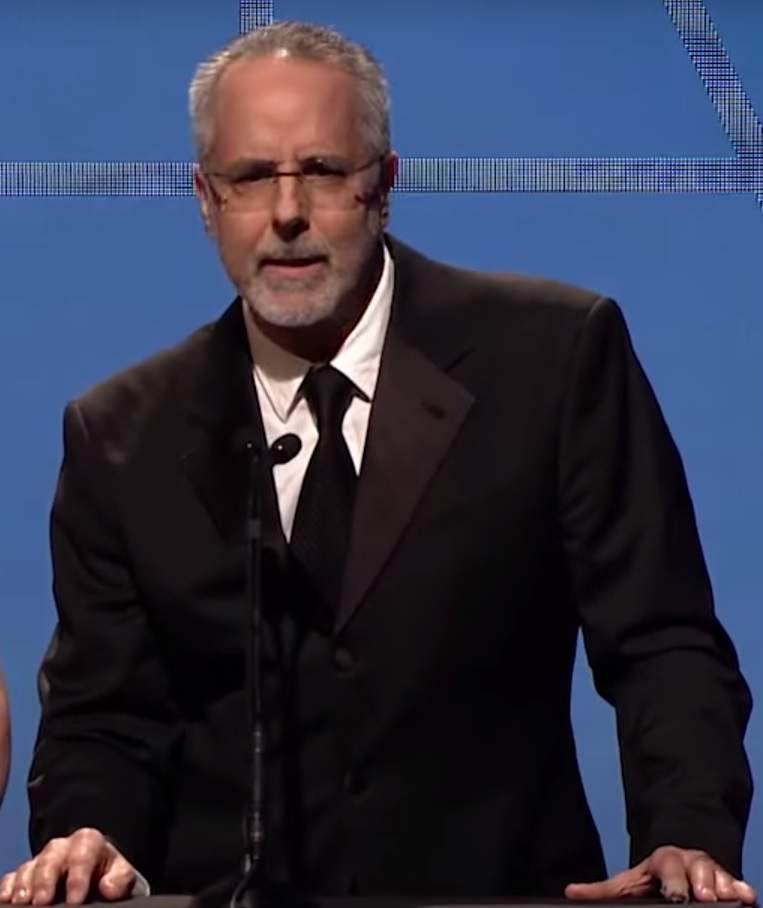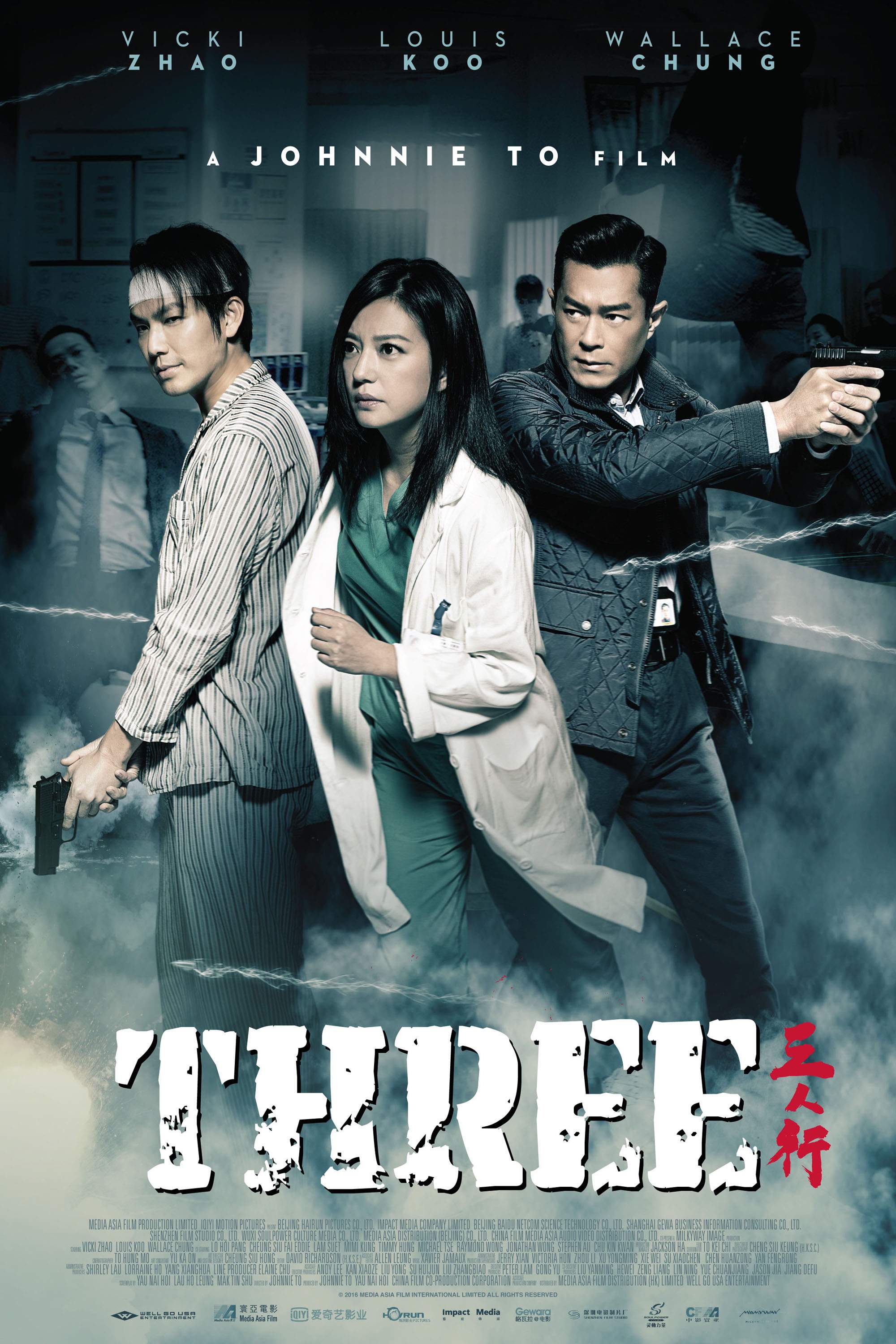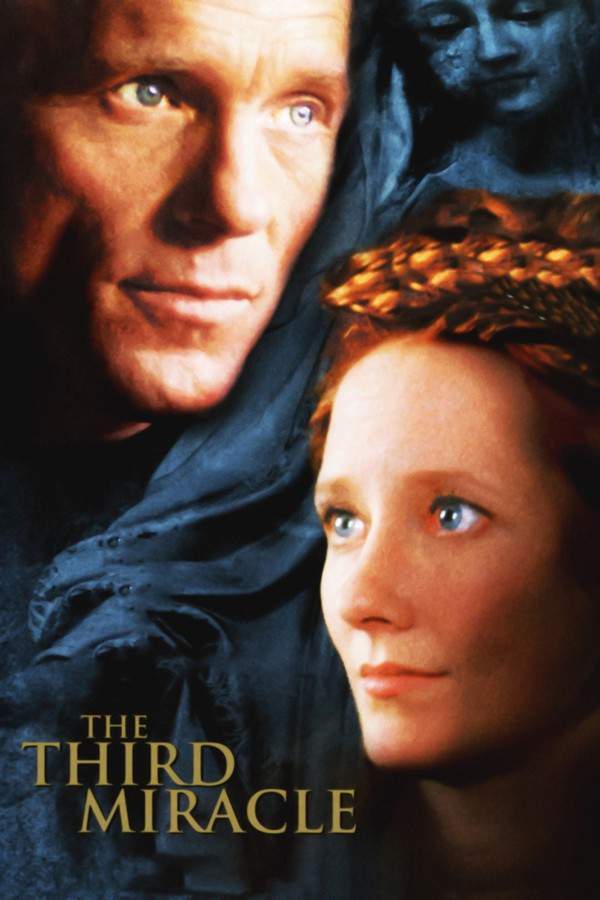
Test your knowledge of Three Christs with our quiz!
Three Christs Plot Summary
Read the complete plot summary and ending explained for Three Christs (2020). From turning points to emotional moments, uncover what really happened and why it matters.
Dr. Alan Stone, a groundbreaking psychologist in 1954, took a bold step by leaving his studies at New York University to delve deep into the operations of the Ypsilanti State Mental Asylum. His primary focus was on the treatment of schizophrenic patients, and he quickly gained a reputation as a staunch critic of the prevailing mental health system. At this time, many individuals suffering from mental illness were often placed in institutions and treated harshly, relying heavily on insulin shock and electroconvulsive therapies, while talk therapy played a minimal role in their recovery.
Within the asylum’s somber halls, Dr. Stone encountered two particularly fascinating patients, both of whom believed they were Jesus Christ. Joseph Cassell, an intellectually astute man, and Clyde Benson, a rough and troubled individual, posed unique challenges for the psychologist. This unexpected encounter led Stone to pioneer an innovative method of group talk therapy. He eventually brought in Leon Gabor, another patient who also believed in his own divine identity, to further explore this trio’s collective dynamic.
Dr. Stone’s insights shed light on the stark contrasts between their experiences. Gabor was deeply traumatized by the oppressive influence of his mother and harbored wounds from multiple assaults during his military service. Benson, grieving the death of his wife who had undergone an abortion, struggled to manage his sorrow. Cassell, grappling with violent outbursts, lived in constant fear of losing his grip on reality, especially after enduring repeated electric shock treatments. Despite the skepticism of his peers, including Dr. Orbus, Stone courageously chose a path that shunned physical punishment. He leaned on compassionate dialogues and heartfelt written correspondence to genuinely connect with his patients.
As Stone began to receive accolades for his pioneering treatment methods, highlighted on the cover of a renowned medical journal, a shadow fell over Dr. Orbus, who found his own credentials threatened by his colleague’s success. Desperate to reassert control, Orbus attempted to interfere in Cassell’s therapy sessions, much to Stone’s dismay. When Cassell found himself summoned to Orbus’ office, he discovered that the head psychiatrist had been subtly maneuvering events to his advantage, having previously avoided writing to Cassell himself and instead leaning on Stone. This betrayal drove Cassell into despair, resulting in explosive outbursts that led Orbus to reinstate aggressive electroshock therapies.
In a desperate attempt to shield Cassell from further harm, Stone tried to intervene but was unfortunately powerless to prevent the onslaught. The emotional turmoil escalated into a confrontation with another physician, leaving both men injured. The final straw came when Orbus ousted Stone from the asylum, leaving him feeling utterly defeated.
Under Orbus’ sinister influence, Cassell started perceiving the psychiatrist as a malevolent manipulator. In a harrowing moment of realization, Cassell understood that Stone’s true intention to help him was overshadowed by Orbus’ malevolence. Fueled by this insight, Cassell made a tragic choice, leaping from the chapel bell tower in a potent rejection of Orbus’ oppressive control.
In the aftermath of Cassell’s heartbreaking death, Stone was called to testify at a hearing wherein he held Orbus accountable for his reckless actions. He interpreted Cassell’s last words as a profound testament to the young man’s struggle for self-justification through sacrifice. The result was harrowing: Stone found himself dismissed from his position but was allowed to pursue his research in New York, accompanied by the remaining patients.
Despite this, Orbus continued his reign, stripped of authority until his eventual retirement. As the film concludes, viewers find Stone sitting alongside the two Jesus figures, engaged in a serene game of cards—a poignant reminder that amidst loss, there lies the potential for hope, redemption, and profound personal transformation.
Three Christs Timeline
Follow the complete movie timeline of Three Christs (2020) with every major event in chronological order. Great for understanding complex plots and story progression.
Dr. Stone's Bold Move
In 1954, Dr. Alan Stone made a significant decision to leave his studies at New York University. This marked the beginning of his journey into the Ypsilanti State Mental Asylum, where he aimed to explore the treatment of schizophrenic patients.
Critique of the Mental Health System
Upon entering the asylum, Dr. Stone quickly established himself as a critic of the harsh mental health practices of the time. The prevalent methods, such as insulin shock and electroconvulsive therapy, were viewed unfavorably by Stone, who believed in the power of compassionate treatment over physical punishments.
Meeting the 'Jesus' Patients
During his tenure, Stone met two captivating patients, both claiming to be Jesus Christ. Joseph Cassell, an intelligent man, and Clyde Benson, a troubled soul, became the focal point of his therapeutic exploration, presenting unique challenges that would shape his approach.
Pioneering Group Talk Therapy
Inspired by his interactions, Dr. Stone introduced innovative group talk therapy to the asylum. He included Leon Gabor, another patient who believed in his divinity, which allowed Stone to further explore the psychological dynamics between these three individuals.
Uncovering Traumas
Through his method, Stone uncovered the deeply embedded traumas of his patients. Gabor's issues stemmed from an oppressive upbringing and military assaults, Benson's grief from his wife’s death and abortion, and Cassell's struggles with violent impulses heightened by his past treatments.
Gaining Recognition
Dr. Stone began to earn accolades for his revolutionary treatment methods, even gracing the cover of a prominent medical journal. This recognition, however, was met with concern from his peers, particularly Dr. Orbus, whose credentials were closely linked to the older, less compassionate methods.
Interference from Dr. Orbus
Feeling threatened by Stone's success, Dr. Orbus attempted to interfere with Cassell's therapy sessions, much to Stone's frustration. Orbus's manipulative tactics became evident when Cassell realized the head psychiatrist's true intentions fell short of helping him.
Cassell's Despair
After experiencing Dr. Orbus’s betrayal, Cassell fell into despair, resulting in volatile outbursts. Orbus responded by reinstating aggressive electroshock therapies that Stone had been fighting against, further complicating matters.
Confrontation Escalates
Stone attempted to protect Cassell from the escalating emotional turmoil but faced resistance. This conflict culminated in a physical confrontation with another physician, leading to injuries on both sides and further deterioration of the asylum's atmosphere.
Dr. Orbus's Power Play
Ultimately, Dr. Orbus ousted Dr. Stone from the asylum. This betrayal left Stone feeling defeated, yet he remained steadfast in his belief in compassionate care despite the harsh realities imposed by Orbus.
Cassell's Tragic Realization
Under Orbus’s manipulation, Cassell began viewing Stone as an adversary rather than an ally. In a heartbreaking moment of clarity, he saw through the psychiatrist's intentions and plunged into despair, culminating in a tragic leap from the chapel bell tower.
The Aftermath of Cassell's Death
Cassell’s devastating death prompted an official hearing where Dr. Stone testified against Dr. Orbus. Stone interpreted Cassell's final actions as a profound commentary on struggle and sacrifice, ultimately shifting the focus onto the systemic failures of mental healthcare.
Stone's Dismissal
Following the hearing, Dr. Stone was dismissed from his position but was granted permission to continue his research in New York, along with some of his surviving patients. This move signified a bittersweet victory for Stone, as he left the oppressive environment behind.
Orbus's Fall from Grace
While Dr. Stone moved on, Dr. Orbus’s reign of terror was curtailed, leading to his eventual retirement. The systemic issues of the asylum remained, but Orbus's credibility began to dwindle significantly.
A Scene of Redemption
In the film's closing moments, Dr. Stone is seen sitting with Cassell and Benson, engaged in a peaceful game of cards. This scene serves as a powerful reminder of hope and the potential for healing amidst loss and suffering.
Three Christs Characters
Explore all characters from Three Christs (2020). Get detailed profiles with their roles, arcs, and key relationships explained.
Joseph Cassell (Peter Dinklage)
Joseph Cassell is portrayed as an intelligent man grappling with the delusion of being Jesus Christ. His violent outbursts reflect deep psychological trauma, exacerbated by harsh treatments. Cassell's character embodies the struggle for identity and understanding within an oppressive environment, ultimately seeking to define his own reality.
Clyde Benson (Bradley Whitford)
Clyde Benson is a troubled character whose grief over his wife's death has left him emotionally shattered. His journey in therapy reveals layers of pain and sorrow, demonstrating how unresolved grief can manifest in mental health issues. Benson’s interactions with Dr. Stone highlight a desperate need for compassion in a rigid system.
Leon Gabor (Walton Goggins)
Leon Gabor adds complexity to the story as a soldier grappling with trauma from his past encounters. His belief in his divine identity showcases the intricacies of mental illness and the quest for personal redemption. Gabor's character creates a dynamic within the therapeutic group, contributing to the overall exploration of identity.
Dr. Alan Stone (Richard Gere)
Dr. Alan Stone is depicted as an innovative and compassionate psychologist challenging the status quo. His dedication to humane treatment reflects his belief in the power of communication over punishment. Stone's character embodies the struggle of advocating for change in a system resistant to new ideas.
Dr. Orbus (Kevin Pollak)
Dr. Orbus represents the oppressive forces within the mental health system, prioritizing control over patient care. His antagonistic role creates tension as he seeks to undermine Dr. Stone's methods. Orbus’ character highlights the conflict between traditional practices and progressive treatments.
Three Christs Settings
Learn where and when Three Christs (2020) takes place. Explore the film’s settings, era, and how they shape the narrative.
Time period
1954
Set in 1954, this period reflects a time when mental health treatment was largely primitive and punitive. The prevailing practices involved drastic measures, like electroconvulsive therapy, while therapeutic conversations were undervalued. It was a pivotal era where reformative ideas were just beginning to challenge outdated norms in psychological care.
Location
Ypsilanti State Mental Asylum
The Ypsilanti State Mental Asylum serves as the primary setting, representing a historical institution for mental health treatment. Known for its somber atmosphere, the asylum was part of a flawed system where harsh treatments overshadowed compassionate care. The facility's cold, clinical environment starkly contrasts the warmth of Dr. Stone's innovative methods.
Three Christs Themes
Discover the main themes in Three Christs (2020). Analyze the deeper meanings, emotional layers, and social commentary behind the film.
💔
Mental Health
The theme of mental health is critical, delving into the struggles faced by patients with schizophrenia. The film critiques the traditional methods of treatment, favoring compassion and understanding instead of cruelty. It explores the transformative power of dialogue and human connection as tools for healing.
⚔️
Conflict
Conflict arises not only between the patients and their oppressive treatments but also between Dr. Stone and his undermining colleague, Dr. Orbus. This theme illustrates the battles fought within the mental health system, questioning authority and advocating for patients’ rights. It emphasizes the personal stakes involved in the quest for understanding and compassion.
🌅
Hope
Hope permeates the narrative as Dr. Stone's innovative therapy offers a glimmer of light in a dark system. Despite tragic events, the film concludes on a note of potential redemption, showcasing the resilience of the human spirit. The final imagery of the characters engaging in a serene game highlights that healing can emerge from despair.

Coming soon on iOS and Android
The Plot Explained Mobile App
From blockbusters to hidden gems — dive into movie stories anytime, anywhere. Save your favorites, discover plots faster, and never miss a twist again.
Sign up to be the first to know when we launch. Your email stays private — always.
Three Christs Spoiler-Free Summary
Discover the spoiler-free summary of Three Christs (2020). Get a concise overview without any spoilers.
In the stark corridors of a 1950s Midwestern mental asylum, a quiet revolution is about to begin. The institution, still steeped in the harshest of treatments, becomes a backdrop for a delicate exploration of belief, compassion, and the fragile boundaries of the mind. The film’s muted palette and measured pacing invite the audience to feel the weight of the era while sensing the undercurrent of hope that crackles beneath the antiseptic walls.
Enter Alan Stone, a young psychiatrist whose idealism clashes with the prevailing doctrine of shock and restraint. Rejecting the brute force of the status quo, he proposes a radical experiment: bringing together three patients who each claim to be the resurrected savior of humanity. The first, Joseph Cassell, possesses a sharp intellect that masks deeper turmoil; the second, Clyde Benson, carries the scars of a rugged past; and the third, Leon Gabor, bears the heaviness of trauma and loss. Their shared delusion becomes the unlikely centerpiece of a group talk‑therapy endeavor, challenging conventional medical wisdom and forcing everyone involved to confront the nature of faith and identity.
As Stone navigates the fragile trust of his patients, the asylum breathes with a mixture of tension and quiet humor, punctuated by moments of genuine human connection. The film balances clinical observation with intimate dialogue, allowing the audience to glimpse the transformative power of empathy. Within this confined world, each character’s quiet struggles hint at larger questions about how we define sanity, the limits of authority, and the possibility of redemption through understanding. The stage is set for a nuanced, character‑driven drama that lingers long after the final scene.
Can’t find your movie? Request a summary here.
Movies with Similar Twists and Themes
Uncover films that echo the narrative beats, emotional arcs, or dramatic twists of the one you're exploring. These recommendations are handpicked based on story depth, thematic resonance, and spoiler-worthy moments — perfect for fans who crave more of the same intrigue.
Featured on this page

What's After the Movie?
Not sure whether to stay after the credits? Find out!
Explore Our Movie Platform
New Movie Releases (2025)
Famous Movie Actors
Top Film Production Studios
Movie Plot Summaries & Endings
Major Movie Awards & Winners
Best Concert Films & Music Documentaries
Movie Collections and Curated Lists
© 2025 What's After the Movie. All rights reserved.










